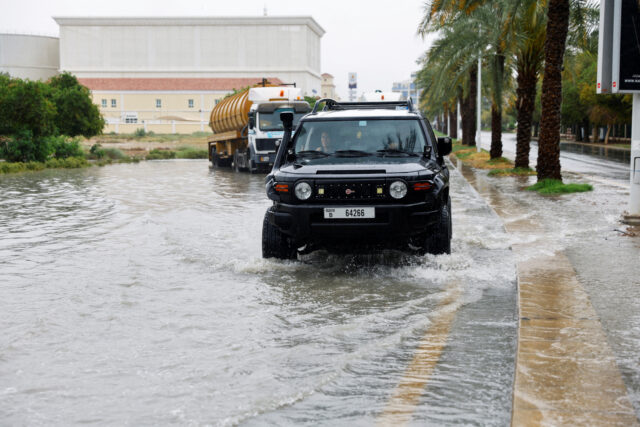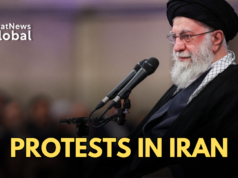After the UAE, Saudi Arabia is facing the fury of torrential rain and floods. Over seven hours on Wednesday and until early Thursday, the desert kingdom’s central region of Qassim was battered by rain triggering floods. Media reports said vehicles were stranded on roads and highways with local residents claiming that water accumulated to a height of 10 cm in residential areas.
The National Meteorological Centre issued red alerts for Qassim including the eastern province on the Gulf, the capital Riyadh and Medina province bordering the Red Sea, the Dawn newspaper reported. It warned of “Heavy rain with strong wind, lack of horizontal visibility, hail, torrential rain and thunderbolts.”
Schools in the eastern province of Riyadh cancelled physical classes, moving learning online. Some schools reported standing water in their campuses, and the Medina Education Department posted pictures of maintenance workers repairing electricity and air conditioning units and draining water.
There was some standing water on Riyadh’s roads but by and large, traffic did not appear to have been disrupted substantially.
Rainstorms and flooding are not unusual in Saudi Arabia, Dawn reported, and in winter some of the larger densely populated cities do struggle with drainage issues. This occurs more frequently in Jeddah on the Red Sea coast, where residents complain that poor infrastructure sees their city struggle when there is a deluge.
The last known natural disaster of this kind was in 2009 when 123 people died in floods, and again two years later but the death toll was lower at 10.
This week’s heavy rainfall in the desert kingdom follows intense rain that lashed the region in mid-April killing 21 people in Oman and four in the UAE, which has received the heaviest rainfall in 75 years.
Some reports say the floods and rain are the result of climate change caused by fossil fuel emissions.
Thirty eight years in journalism, widely travelled, history buff with a preference for Old Monk Rum. Current interest/focus spans China, Technology and Trade. Recent reads: Steven Colls Directorate S and Alexander Frater's Chasing the Monsoon. Netflix/Prime video junkie. Loves animal videos on Facebook. Reluctant tweeter.





